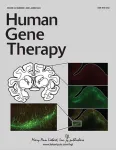(Press-News.org) Scientists seeking a way to eliminate an adverse reaction to treatments for acute lymphocytic leukemia, a common childhood cancer, have found what they believe to be an early warning indicator.
Mouse studies conducted by Rutgers researchers as part of a larger scientific team are pointing to vitamin A levels as a signal that a patient may or may not be vulnerable to a dangerous toxicity.
Summarizing their findings in Science Translational Medicine, the scientists found that, in patients being treated for acute lymphocytic leukemia with the chemotherapy drug asparaginase, there is an association between low levels of vitamin A and the development of pancreatitis. The results also suggest that increasing levels of vitamin A in the diet may reduce the risk of developing pancreatitis.
“These findings are important because they serve as a possible tool to aid in improving the safety of chemotherapy treatment in patients diagnosed with acute lymphocytic leukemia,” said study author Tracy Anthony, a professor in the Department of Nutritional Sciences in the Rutgers School of Environmental and Biological Sciences (SEBS) and a researcher in the Cancer Metabolism and Immunology Research Program at Rutgers Cancer Institute of New Jersey.
“Asparaginase is viewed as a powerful weapon against acute lymphocytic leukemia,” Anthony said. However, the drug can trigger pancreatitis, halting treatment and threatening the life of the patient.
“Currently, there are no established tools or clinical practices to predict the emergence of asparaginase-associated toxicities,” Anthony said.
Teaming with Loredana Quadro, a professor in the Department of Food Science at SEBS and a co-author of the study, they decided to search for any metabolic signatures that might exist and could be used to predict the onset of pancreatitis. In studies conducted at Rutgers, the scientists detected lower levels of vitamin A in the liver and the blood of mice exposed to asparaginase.
They combined their experimental data with other researchers’ analyses that included gene expression data in human patients administered asparaginase and electronic patient health records to understand more about the mechanisms driving the development of pancreatitis in some patients.
Collectively, the data showed that a lower level of dietary vitamin A is associated with an increased risk of developing pancreatitis, as well as an increase in its severity.
Vitamin A can be taken as a supplement or obtained through foods, including meat and dairy products as well as vegetables and fruits. It’s an essential nutrient for humans and aids general health, including vision, growth and cell division.
The researchers said the study could offer an important step forward in patient care and presents the opportunity for more research to examine how much vitamin A would be needed to protect every acute lymphocytic leukemia patient from pancreatitis.
“The long-term goal of this work is to make cancer treatment in children safer,” Quadro said.
Researchers from Stanford University and the University of Cincinnati College of Medicine also were involved in the study.
END
In bid to make child cancer treatments safer, scientists find possible warning signs of severe reaction
Rutgers researchers show importance of low vitamin A levels as harbinger of adverse event
2023-03-27
ELSE PRESS RELEASES FROM THIS DATE:
HIV can persist for years in myeloid cells of people on antiretroviral therapy
2023-03-27
A subset of white blood cells, known as myeloid cells, can harbor HIV in people who have been virally suppressed for years on antiretroviral therapy, according to findings from a small study supported by the National Institutes of Health. In the study, researchers used a new quantitative method to show that HIV in specific myeloid cells—short-lived monocytes and longer-lived monocyte-derived macrophages—can be reactivated and infect new cells. The findings, published in Nature Microbiology, suggest that ...
The Greenland Ice Sheet is close to a melting point of no return
2023-03-27
American Geophysical Union
Press Release 23-11
27 March 2023
For Immediate Release
This press release is available online at: https://news.agu.org/press-release/the-greenland-ice-sheet-is-close-to-a-melting-point-of-no-return/
AGU press contact:
Rebecca Dzombak, +1 (202) 777-7492, news@agu.org (UTC-4 hours)
Contact information for the researchers:
Dennis Höning, Potsdam Institute for Climate Impact Research, dennis.hoening@pik-potsdam.de (UTC+1 hour)
WASHINGTON — The Greenland Ice Sheet covers 1.7 million ...
Chicago pollution varies by neighborhood
2023-03-27
New simulation combines emissions with weather and chemistry in an air-quality model
First neighborhood-scale simulation of its kind focused on Chicago tracks air quality hour by hour across areas as small as 1.3 kilometers-sized blocks
Simulation can show how pollutants move across space and time throughout the city and surrounding areas
Air pollution along highways is consistently worse than other areas, regardless of season or time of day
EVANSTON, Ill. — If you live along one of the major interstate highways running through Chicago or directly next to Lake Michigan, you are regularly exposed to more air pollution than ...
Moffitt researchers discover two-pronged approach to stimulate STING antitumor activity
2023-03-27
TAMPA, Fla. – Immunotherapies have greatly improved the outcomes of many patients with melanoma. But there is still a need for new approaches for the subset of patients who do not respond well to this type of therapy. Moffitt Cancer Center researchers are looking at new targets to help inhibit tumor development and promote antitumor immunity, one being the STING signaling pathway. In a new article published in Nature Communications, a team of Moffitt and University of Miami Miller School of Medicine investigators demonstrate that targeting the STING pathway with a combination strategy ...
Making immunizations more effective
2023-03-27
In addition to an antigen, many vaccines also contain substances, called adjuvants, which stimulate the immune system. By using computer-aided molecular design and machine learning, a Chinese research team has now developed two novel broad-spectrum adjuvants that can significantly amplify the immune response to vaccines. As reported in the journal Angewandte Chemie, they were able to enhance the effectiveness of immunization against certain forms of cancer in animal models.
Adjuvants amplify and prolong the effect of vaccine immunizations. Aluminum salts have been successfully used ...
JWST confirms giant planet atmospheres vary widely
2023-03-27
ITHACA, N.Y. – An international team of astronomers has found the atmospheric compositions of giant planets out in the galaxy do not fit our own solar system trend.
Using NASA’s James Webb Space Telescope (JWST), the researchers discovered that the atmosphere of exoplanet HD149026b, a ‘hot Jupiter’ orbiting a star comparable to our sun, is super-abundant in the heavier elements carbon and oxygen – far above what scientists would expect for a planet of its mass.
These findings, published in “High atmospheric metal enrichment for a Saturn-mass ...
Breakthrough Brain Imaging: Experts use new microscope, AI algorithm, and voltage indicators to image electrical activity deep in the brain
2023-03-27
When studying the brain, researchers are just beginning to use a method known as voltage imaging to track neural activity in the living animal. While this approach is a promising way to better understand neuron firing, behavior, and cognition, there are limitations and risk factors. The practice requires putting a lot of light into the brain (which can lead to overheating) and only has the capacity to image ten neurons at a time.
New research from Jerry Chen, a Boston University College of Arts & Sciences assistant professor of biology, and collaborators aims to address these challenges. Published today in Nature Methods, ...
RIT researcher receives funding to improve infrastructure safety for nuclear waste disposal
2023-03-27
Researchers at Rochester Institute of Technology are investigating the combined physical effects of heat, chemical reactions, and seismic activity on concrete lining structures used to dispose of nuclear waste. Results from the work could improve nuclear waste infrastructure designs, better long-term safety management, and refine strategies to meet climate change targets.
Lu Sun, a professor in RIT’s College of Engineering Technology (CET), received a grant of nearly $500,000 from the Nuclear Regulatory Commission for “High temperature and seismic response of concrete lining structures and clay in nuclear waste disposal.” ...
NASA’s Webb measures the temperature of a rocky exoplanet
2023-03-27
An international team of researchers has used NASA’s James Webb Space Telescope to measure the temperature of the rocky exoplanet TRAPPIST-1 b. The measurement is based on the planet’s thermal emission: heat energy given off in the form of infrared light detected by Webb’s Mid-Infrared Instrument (MIRI). The result indicates that the planet’s dayside has a temperature of about 500 kelvins (roughly 450 degrees Fahrenheit) and suggests that it has no significant atmosphere.
This is the first detection of any form of light emitted by an exoplanet as small and as cool as the rocky planets in our own solar system. The result ...
Benefiting from orphan drug and rare pediatric disease designations for gene therapy
2023-03-27
Providing an overview of the submissions process and examples of U.S. Food and Drug Administration (FDA) applications for Orphan Drug Designation (ODD) and Rare Pediatric Disease Designation (RPDD), a new article can help developers of gene therapies for rare genetic diseases. The article is published in the peer-reviewed journal Human Gene Therapy. Click here to read the article now.
Anne Pariser and Elizabeth Ottinger, from the National Center for Advances in Translational Sciences (NCATS), National Institutes of Health, and coauthors, describe the ODD and RPDD programs, which provide financial incentives for the development of ...
LAST 30 PRESS RELEASES:
Air pollution exposure and birth weight
Obstructive sleep apnea risk and mental health conditions among older adults
How talking slows eye movements behind the wheel
The Ceramic Society of Japan’s Oxoate Ceramics Research Association launches new international book project
Heart-brain connection: international study reveals the role of the vagus nerve in keeping the heart young
Researchers identify Rb1 as a predictive biomarker for a new therapeutic strategy in some breast cancers
Survey reveals ethical gaps slowing AI adoption in pediatric surgery
Stimulant ADHD medications work differently than thought
AI overestimates how smart people are, according to HSE economists
HSE researchers create genome-wide map of quadruplexes
Scientists boost cell "powerhouses" to burn more calories
Automatic label checking: The missing step in making reliable medical AI
Low daily alcohol intake linked to 50% heightened mouth cancer risk in India
American Meteorological Society announces Rick Spinrad as 2026 President-Elect
Biomass-based carbon capture spotlighted in newly released global climate webinar recording
Illuminating invisible nano pollutants: advanced bioimaging tracks the full journey of emerging nanoscale contaminants in living systems
How does age affect recovery from spinal cord injury?
Novel AI tool offers prognosis for patients with head and neck cancer
Fathers’ microplastic exposure tied to their children’s metabolic problems
Research validates laboratory model for studying high-grade serous ovarian cancer
SIR 2026 delivers transformative breakthroughs in minimally invasive medicine to improve patient care
Stem Cell Reports most downloaded papers of 2025 highlight the breadth and impact of stem cell research
Oxford-led study estimates NHS spends around 3% of its primary and secondary care budget on the health impacts of heat and cold in England
A researcher’s long quest leads to a smart composite breakthrough
Urban wild bees act as “microbial sensors” of city health.
New study finds where you live affects recovery after a hip fracture
Forecasting the impact of fully automated vehicle adoption on US road traffic injuries
Alcohol-related hospitalizations from 2016 to 2022
Semaglutide and hospitalizations in patients with obesity and established cardiovascular disease
Researchers ‘listen in’ to embryo-mother interactions during implantation using a culture system replicating the womb lining
[Press-News.org] In bid to make child cancer treatments safer, scientists find possible warning signs of severe reactionRutgers researchers show importance of low vitamin A levels as harbinger of adverse event



